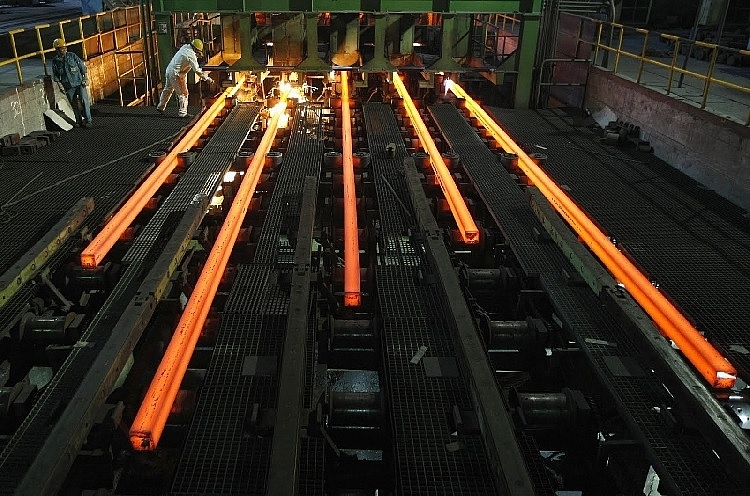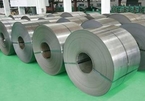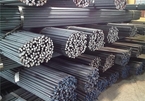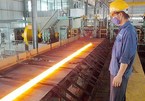 |
As the domestic stainless steel production capacity far outweighs the actual demand, the Mekong Delta province of Tien Giang’s decision to approve the cold-rolled stainless steel project by two Chinese investors, after it was rejected at least twice in the southern province of Dong Nai, is causing local steelmakers a great deal of concern and drawing calls to tighten the licensing of new steel projects.
A series of local steel producers have submitted a petition for urgent review to the Government Office and related ministries on the new cold-rolled stainless steel project in Vietnam.
This project is invested by Foshan Union Stainless Co., Ltd. and Zhejiang Yongjin Metal Technology Co,. Ltd. (Yongjin Metal) in Tien Giang, laying out a blueprint for a facility with an annual capacity of 250,000 tonnes of cold-rolled stainless steel.
The document noted that this is an example of the company going around one province’s refusal to get an investment certificate in another in Vietnam According to the petition, China-based Yongjin Metal applied for an investment certificate in Dong Nai to build a stainless steel project in April 2017 and August 2018, but it was rejected due to the local authorities’ growing concern of oversupply and environmental pollution.
“However, only eight months after receiving the Dong Nai decision refusing to issue an investment certificate on August 23, 2017, Yongjin Metal received the permit for this project in another province. Stainless steel producers are surprised and confounded by this,” the petition stated.
Nghiem Xuan Da, chairman of the Vietnam Steel Association (VSA), suggested that, “The authorities of the provincial industrial zones should consult the central authorities as well as the relevant associations when licensing new investment projects in order to avoid supply-demand imbalances as well as trade disputes between nations. It is imperative to consider many factors when adopting a new steel project.”
Dr. Phan Huu Thang, former director of the Foreign Investment Agency under the Ministry of Planning and Investment, said that a database on foreign direct investment (FDI) is being built and information flows will not be completely smooth until the system is completed.
The total designed capacity of the domestic cold-rolled steel industry reached more than 700,000 tonnes, so local producers now can only run at about half of their designed capacity, according to the petition.
The local demand for stainless steel will continue to be met with an oversupply of 229,000 tonnes up until 2021, according to global market analysis by CRU Group calculated on the assumption of 8.4 per cent positive average growth per year.
According to the VSA, it is hard to export cold-rolled stainless steel as there are many large manufacturers in Southeast Asia and the regional supply exceeds the demand. It is also difficult to export steel to the US and EU markets which apply anti-dumping policies to steel products.
“The domestic stainless steel market has been hit hard by the influx of Chinese products. If more new investors are involved, it will be only a matter of time until the market collapses,” said a steel expert, adding that continuing to attract investment into cold-rolled stainless steel will create fierce competition among producers and reduce their investment efficiency.
China, the world’s largest steel producer, has experienced years of plunging prices and factory shutdowns due to oversupply.
The Chinese government has shut down steel plants with the total capacity of over 90 million tonnes over the past five years and plans to reduce steel output by 100 million tonnes to 150 million tonnes by 2020 to ease the supply and demand imbalance.
Thus, Chinese steel producers are moving to set up operations abroad, including in Vietnam, and have even agreed to sell their output at a loss to win more orders and cover their fixed operating costs.
The concerns have not stopped here, as many countries are using anti-dumping measures against Chinese steel products as well as goods of covered-up Chinese origin.
Tightening new projects
The VSA suggested that international investors should not be invited to produce normal steel products that are in oversupply in the country. Instead, they should be encouraged to invest in the production of alloys and high-quality steel.
Besides, with the government’s reluctance to trade off environmental integrity for economic growth, many provinces should be cautious about steel projects, with some even rejecting new steel investment proposals.
“If Vietnam is as determined to protect the environment as it claims, clean projects will come. After tightening the licensing, the quantity may be less, but the quality will be better,” economist Pham Chi Lan said.
In the same way, Tran Vietnam Ngai, chairman of the Vietnam Energy Association stressed that the steel industry is a particularly energy-intensive sector. Thus, any new steel projects must avoid having significant negative impacts on the national power grid.
Besides, to curb the influx of cheaper imports and help local producers, a number of markets have slapped high anti-dumping duties on stainless steel from China, including India, Brazil, Thailand, the EU, and the US.
The VSA warned foreign investors against investing in factories in Vietnam with the targets of avoiding Vietnam’s anti-dumping taxes and avoiding anti-dumping export duties.
Lessons from the past
Reminding of past issues when Vietnam witnessed the rampant development of power-hungry steel plants, Pham Chi Cuong, former chairman of the VSA, warned that, “The lessons are relevant to this day, especially as the Ministry of Industry and Trade (MoIT) is no longer responsible for planning in industries like steel.”
In 2010, the Vietnamese steel sector witnessed a grievous surplus due to its failure to conform with the planning, with over 30 steel projects licensed beyond the official master plans for the industry. Together, these projects added 60 million tonnes of extra annual capacity to the industry and are a direct result of inadequate regulation and lax local authorities’ management.
Before, in 2007 and 2008 alone, dozens of billion-dollar steel projects, both domestic and foreign, were licensed. These included the $1 billion Tycoon-E.United Dung Quat steel complex in the central province of Quang Ngai with the annual capacity of three million tonnes in its first phase, the $4 billion Van Phong steel complex in the central province of Khanh Hoa.
The MoIT’s inspection later found that of the 65 steel projects with an annual capacity of 100,000 tonnes or higher each, only 17 were included in the planning and 16 were approved by the ministry while the remaining 32 projects were licensed by provinces outside of the planning, with as many as 24 licensed ultra vires.
The southern province of Ba Ria-Vung Tau had the most steel projects across the country with the total annual capacity of 3.75 million tonnes of refined steel and over 10 million tonnes of rolled steel. Half of these projects were outside the planning.
Others with unplanned projects included the northern port city of Haiphong with five projects, the central province of Thanh Hoa and the northern province of Hai Duong with four each, the central province of Ha Tinh with three, and the northern provinces of Quang Ninh and Ha Nam with one project each already in operation.
This unchecked licensing fiesta has led to the crippling surplus where supply exceeds demand by 50 per cent. Since then the surplus has become worse despite an annual 10 per cent growth in the domestic demand. VIR
Phuong Thu

VN steel manufacturers struggle for shelter during tough period
A high number of steel manufacturers have reported loss as export markets have shrunk, while the domestic battle is fierce because of competition.

Steel imports from China go up
Steel imports from China surged by 7.3 per cent to nearly 2 million tons during the first four months of this year, totaling US$1.22 million in value.

Vietnam imports nearly 100 percent of materials for steel production
Vietnam's steel industry has faced many difficulties and challenges during the past time due to the excess capacity and fierce competition from domestic enterprises as well as direct impact of imported steel from Chinese market.
 The total designed capacity of the domestic cold-rolled steel industry reached more than 700,000 tonnes, so local producers now can only run at about half of their designed capacity, according to the petition.
The total designed capacity of the domestic cold-rolled steel industry reached more than 700,000 tonnes, so local producers now can only run at about half of their designed capacity, according to the petition.